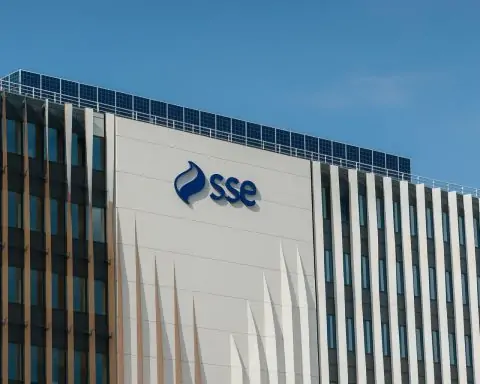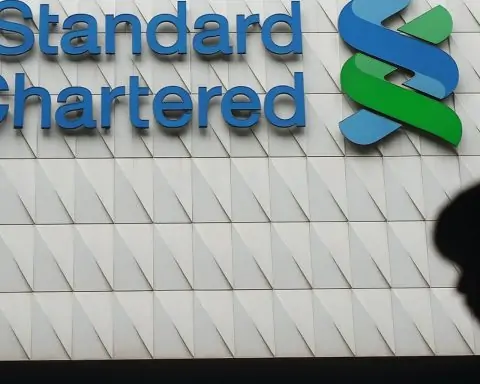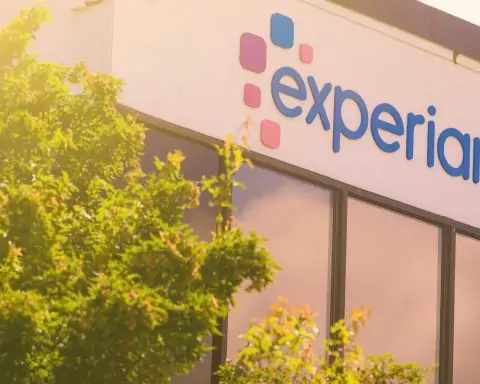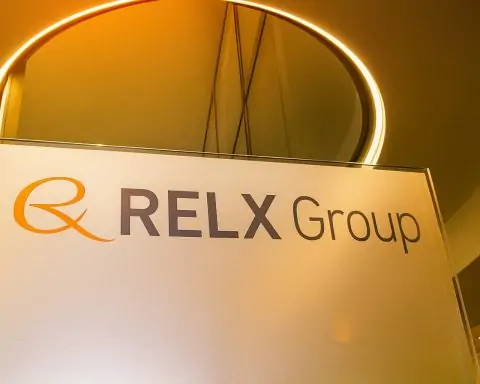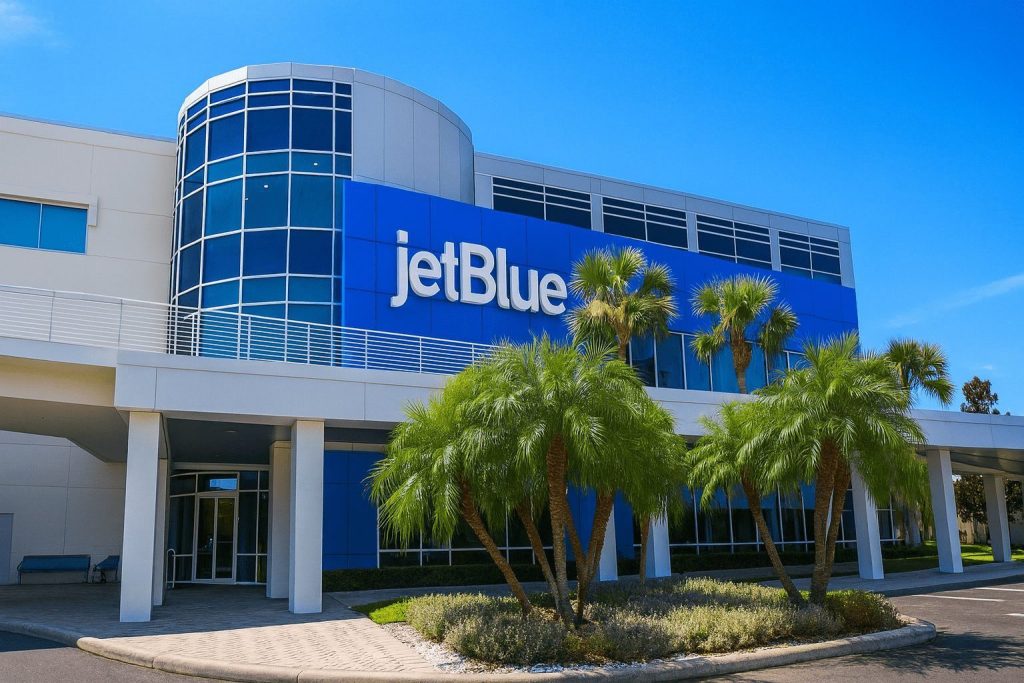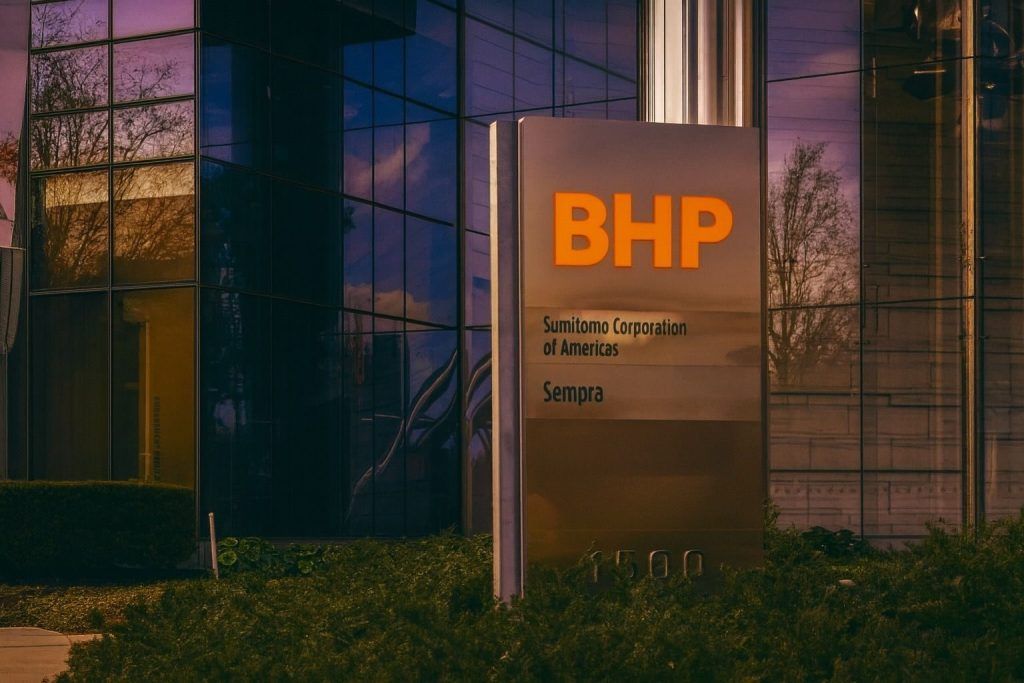Published: November 23, 2025 – Ticker: NYSE: ABBV
This article is for informational purposes only and is not financial advice.
Key takeaways
- AbbVie stock is trading just below its 52‑week high after closing at $236.28 on Friday, November 21, 2025, up roughly 30%+ year to date. [1]
- Q3 2025 earnings beat expectations: revenue grew 9.1% year over year to $15.8 billion, driven by immunology and neuroscience, while GAAP EPS plunged on a one‑time R&D charge. [2]
- Skyrizi and Rinvoq remain the growth engine, generating about $6.9 billion in Q3 alone and underpinning AbbVie’s decision to raise 2025 revenue guidance to ~$60.9 billion and EPS guidance to $10.61–$10.65. [3]
- Fresh catalyst this week: on November 18, the FDA granted full approval for EPKINLY (epcoritamab) in combination with rituximab and lenalidomide for relapsed or refractory follicular lymphoma, expanding AbbVie’s oncology franchise. [4]
- Income angle: AbbVie paid $6.65 per share in dividends in 2025 (yield ~2.8% at Friday’s close) and has approved a 5.5% dividend hike to $1.73 per quarter starting February 2026, implying a forward yield near 3%. [5]
AbbVie stock price today: still near the top of its range
U.S. markets are closed today (Sunday), so the latest full trading session for AbbVie stock (ABBV) was Friday, November 21, 2025. AbbVie:
- Closed: $236.28
- Intraday range: $230.14 – $238.01
- Volume: ~8.0 million shares [6]
The stock is trading close to its 52‑week range of $164.39 to $244.81, leaving shares only a few percentage points below their recent high. [7]
Performance context:
- Year‑to‑date 2025 total return: about +31%, outpacing the broader market and most big pharma peers. [8]
- Market capitalization: roughly $400–$420 billion, placing AbbVie among the world’s largest biopharmaceutical companies. [9]
In short, AbbVie enters this week with strong momentum and a share price that already reflects a lot of optimism about its pipeline and earnings recovery.
Q3 2025 earnings: immunology and neuroscience carry the quarter
AbbVie reported third‑quarter 2025 results on October 31 that beat Wall Street’s expectations on both revenue and adjusted earnings. [10]
Headline numbers
- Net revenue: $15.776–$15.78 billion, +9.1% year over year (8.4% operational). [11]
- GAAP diluted EPS:$0.10, down 88.6% year over year, weighed down by a $2.7 billion acquired R&D (IPR&D) charge. [12]
- Adjusted diluted EPS:$1.86, down about 38% year over year but ahead of consensus (~$1.77) and above AbbVie’s own pre‑announcement range of $1.74–$1.78. [13]
That large R&D charge – tied to deals and collaborations – explains why the headline EPS looks weak even as the underlying business is growing at a healthy clip.
Segment breakdown: Skyrizi and Rinvoq dominate
AbbVie’s growth engine remains its immunology and neuroscience portfolios, which more than offset ongoing declines in legacy products like Humira and pressure in its aesthetics business.
From the company’s Q3 update and subsequent analyses: [14]
- Immunology revenue:$7.885 billion, +11.9% reported
- Skyrizi:$4.708 billion, +46.8%
- Rinvoq:$2.184 billion, +35.3%
- Humira:$993 million, down ~55.7% as biosimilar competition intensifies
- Neuroscience revenue:$2.841 billion, +20%
- Vraylar: $934 million, +6.7%
- Botox Therapeutic: $985 million, +16%
- Migraine drugs Ubrelvy and Qulipta also posted strong double‑digit growth
- Oncology revenue:$1.682 billion, essentially flat year over year; Imbruvica declined, partially offset by Venclexta and newer assets.
- Aesthetics revenue: roughly $1.19 billion, down around 4%, with softness in Botox Cosmetic and Juvederm continuing to worry some analysts. [15]
Taken together, Skyrizi and Rinvoq delivered about $6.9 billion in Q3, almost half of AbbVie’s total quarterly revenues, and around $18.5 billion in the first nine months of 2025. [16]
Guidance raised again: 2025 revenue now pegged at ~$60.9 billion
Despite the R&D charge, AbbVie used Q3 to raise its full‑year 2025 outlook for the third time this year:
- 2025 adjusted EPS guidance: now $10.61–$10.65, up from $10.38–$10.58 after incorporating the $2.05 per‑share impact of IPR&D and milestones incurred year‑to‑date. [17]
- 2025 revenue guidance: now about $60.9 billion, up $400 million from its prior forecast and roughly $1.9 billion higher than where the year started. [18]
- Q4 2025 outlook: net revenue > $16.3 billion and adjusted EPS of $3.32–$3.36. [19]
Management’s message is that core operations are performing better than expected, especially in immunology and neuroscience, and that one‑off R&D charges are masking that strength in GAAP earnings.
New oncology catalyst: FDA approval for EPKINLY combination therapy
The biggest fresh news for AbbVie stock this week is in oncology.
On November 18, 2025, the U.S. FDA approved EPKINLY (epcoritamab‑bysp) plus rituximab and lenalidomide (often referred to as “EPKINLY + R²”) for adults with relapsed or refractory follicular lymphoma after at least one prior line of systemic therapy. [20]
Why this matters:
- It becomes the first and only bispecific antibody combination therapy approved for this patient group – a meaningful commercial and scientific milestone. [21]
- The pivotal Phase 3 EPCORE FL‑1 trial showed:
- About a 79% reduction in the risk of disease progression or death versus rituximab + lenalidomide alone.
- Overall response rate (ORR) of ~89% versus 74% for the control arm. [22]
EPKINLY, developed with partner Genmab, already had accelerated approval as a monotherapy in a later‑line follicular lymphoma setting; this new decision both broadens its label and converts the monotherapy indication to full approval. [23]
For AbbVie shareholders, this reinforces the company’s push to deepen its oncology portfolio beyond Imbruvica, giving it another high‑value, specialty therapy in blood cancers where pricing and margins tend to be attractive.
Long‑term growth story: Skyrizi, Rinvoq, obesity and next‑gen cancer drugs
The bull case for AbbVie stock has increasingly shifted away from Humira and toward a multi‑pillar growth story.
1. Skyrizi and Rinvoq: the new “twin blockbusters”
AbbVie now expects:
- Skyrizi 2025 sales of about $17.3 billion, up another $200 million from earlier estimates, thanks to strong share gains in psoriasis and inflammatory bowel disease. [24]
- Combined Skyrizi + Rinvoq sales to exceed $31 billion by 2027, with roughly $20 billion from Skyrizi and $11 billion from Rinvoq, according to company commentary and third‑party analyses. [25]
Additional tailwinds:
- A recent trial showed Rinvoq outperforming Humira in rheumatoid arthritis, both on improvement rates and on the proportion of patients achieving no visible disease signs – important marketing ammunition as AbbVie migrates patients away from its legacy blockbuster. [26]
- In September, AbbVie announced a settlement that extends Rinvoq’s U.S. market exclusivity to 2037, four years longer than previously expected. Analysts estimate this could add up to $2 billion in peak‑year sales and helped push ABBV to record highs at the time. [27]
Put simply, Skyrizi and Rinvoq have already surpassed Humira’s peak quarterly revenue and are shaping up as multi‑decade franchises — a key reason investors have been willing to award AbbVie a premium valuation.
2. Obesity: AbbVie’s first serious move into a $100B+ market
In early 2025, AbbVie signed a licensing deal worth up to $2.2 billion with Danish biotech Gubra for an investigational amylin‑based obesity therapy, GUB014295 (also known as GUBamy). [28]
- Early Phase 1 results showed modest but promising weight‑loss data.
- Amylin agonists are viewed as a potential complement to GLP‑1 drugs like Ozempic and Zepbound rather than direct copycats.
While AbbVie is late to the obesity party, the deal signals management’s intent to participate in one of the fastest‑growing therapeutic categories, which could become a significant upside driver later in the decade if clinical data remain favorable.
3. “Smart bomb” oncology – antibody‑drug conjugates (ADCs)
AbbVie is also among the big pharma companies investing heavily in antibody‑drug conjugates (ADCs) – cancer therapies that link targeted antibodies with potent chemotherapies to more precisely attack tumors. Industry forecasts see the ADC market exceeding $30 billion by 2033, and AbbVie is active both internally and via partnerships. [29]
Combined with EPKINLY and deals in Parkinson’s disease, neuroscience and RNA‑based therapies, AbbVie is steadily building a diversified late‑stage pipeline designed to sustain growth as older assets face pricing and patent headwinds. [30]
Dividend, cash flow and valuation: has AbbVie stock run too far?
Dividend profile
AbbVie remains a favorite among dividend investors:
- 2025 dividend payments: about $6.65 per share, implying a trailing yield ~2.8% at Friday’s close. [31]
- On September 5, the board declared a quarterly dividend of $1.64 per share payable November 14, 2025. [32]
- On October 31, AbbVie announced a 5.5% dividend increase to $1.73 per share, starting with the dividend payable February 17, 2026, to shareholders of record on January 16. [33]
That raises the forward annualized dividend to $6.92; at recent prices, that’s a forward yield hovering just under 3%. [34]
AbbVie notes that, since its 2013 spin‑off, it has increased its quarterly dividend by more than 330% and is a member of the S&P Dividend Aristocrats Index thanks to the combined Abbott/AbbVie streak of annual dividend hikes. [35]
Valuation snapshot
Because GAAP earnings are temporarily depressed by the IPR&D charge, traditional P/E ratios look inflated:
- Trailing GAAP P/E: over 100x, which is not very informative right now. [36]
More relevant are forward metrics:
- Consensus 2025 EPS: roughly $10.6–$10.7 per share, closely aligned with AbbVie’s guidance. [37]
- At $236.28, that implies a forward P/E in the low‑20s (around 21–22x).
- One independent valuation site pegs forward P/E at about 21.75x, broadly confirming that range. [38]
For a large‑cap pharma company, that’s not cheap: AbbVie trades at a modest premium to many diversified peers, reflecting investor confidence that:
- Skyrizi and Rinvoq will continue to grow strongly well into the 2030s.
- New franchises in oncology, neuroscience and obesity will add meaningful incremental earnings.
On the flip side, the premium multiple leaves less margin of safety if growth disappoints or if pricing pressure accelerates.
Sentiment check: Wall Street targets and institutional buying
Analyst and institutional sentiment toward ABBV stock is broadly positive:
- MarketBeat data show a “Moderate Buy” consensus rating, with 2 Strong Buys, 13 Buys and 10 Holds, and an average price target around $241.85, only a few dollars above the current price. [39]
- Some analysts are more bullish: Berenberg Bank recently upgraded AbbVie to “Buy” and lifted its price target from $170 to $270 per share. [40]
- Relative‑strength metrics from Investor’s Business Daily put AbbVie’s RS Rating in the low‑80s, signaling outperformance versus most stocks over the past year, though technicians note that shares are extended above prior buy points after the recent rally. [41]
Institutional investors continue to add:
- Recent SEC‑based reports show firms like Vestor Capital LLC, Bahl & Gaynor and Charles Schwab Investment Management increasing their ABBV stakes, with institutional and hedge‑fund ownership now topping 70% of shares outstanding. [42]
In short, sentiment is optimistic but not euphoric: AbbVie is widely seen as a high‑quality, growth‑at‑a‑reasonable‑price pharma name, but its valuation suggests expectations are already elevated.
Key risks for AbbVie investors to watch
Even with the stock near record highs, risks remain:
- Humira erosion: While now a smaller piece of the pie, Humira still contributes nearly $1 billion per quarter; continued price and volume pressure from biosimilars will keep dragging on GAAP comparisons. [43]
- Aesthetics softness: AbbVie’s aesthetics franchise (Botox Cosmetic, Juvederm) has repeatedly missed bullish expectations, with Q3 sales down mid‑single digits. A prolonged slowdown could cap margin expansion. [44]
- R&D and deal risk: The Q3 R&D charge shows how expensive business development can be. Future acquisitions or collaborations may not deliver the anticipated returns. [45]
- Drug‑pricing and policy headwinds: AbbVie, like peers, faces ongoing scrutiny around drug prices and Medicare negotiations, which could pressure U.S. margins over time. [46]
- Competition in obesity and immunology: While Rinvoq and Skyrizi are leaders today, rivals from J&J, Lilly, Novo Nordisk and others are racing to capture share in IBD, psoriasis and obesity, which could slow AbbVie’s growth later in the decade. [47]
What today’s setup means for AbbVie stock
As of November 23, 2025, AbbVie stock sits at an interesting crossroads:
- Bullish factors:
- Shares are supported by double‑digit growth in core franchises, raised 2025 guidance, a new oncology approval (EPKINLY combo), and strong free‑cash‑flow–funded dividends. [48]
- AbbVie’s pipeline and lifecycle management for Skyrizi and Rinvoq (including the recent exclusivity extension) give visibility into high‑margin growth well into the 2030s. [49]
- Caution flags:
- The stock now trades at a forward P/E in the low‑20s, with the price only slightly below the average Street target and not far from its 52‑week high. [50]
- Any stumble in major products (Skyrizi, Rinvoq, or new oncology launches) or renewed weakness in aesthetics could spark a pullback after the strong 2025 run. [51]
For long‑term, research‑driven investors, AbbVie today looks like a mature growth and income story: not a deep value play, but a defensive large‑cap with a growing dividend and visible earnings drivers.
For short‑term traders, the key questions will be:
- Can AbbVie sustain its current momentum through Q4 earnings in late January? [52]
- Will new data in obesity, oncology and immunology continue to reset expectations higher, or is much of that optimism already priced in?
As always, anyone considering an investment in ABBV stock should weigh these opportunities and risks against their own time horizon, risk tolerance and portfolio needs, and consider speaking with a qualified financial advisor before making decisions.
References
1. finance.yahoo.com, 2. investors.abbvie.com, 3. www.prnewswire.com, 4. news.abbvie.com, 5. stocksguide.com, 6. finance.yahoo.com, 7. www.investing.com, 8. totalrealreturns.com, 9. www.stocktitan.net, 10. www.marketbeat.com, 11. investors.abbvie.com, 12. investors.abbvie.com, 13. finance.yahoo.com, 14. www.prnewswire.com, 15. www.alpha-sense.com, 16. www.prnewswire.com, 17. news.abbvie.com, 18. www.fiercepharma.com, 19. fintool.com, 20. news.abbvie.com, 21. news.abbvie.com, 22. www.onclive.com, 23. www.fda.gov, 24. www.fiercepharma.com, 25. firstwordpharma.com, 26. www.reuters.com, 27. www.reuters.com, 28. www.investors.com, 29. www.investors.com, 30. en.wikipedia.org, 31. stocksguide.com, 32. news.abbvie.com, 33. news.abbvie.com, 34. finance.yahoo.com, 35. news.abbvie.com, 36. www.marketbeat.com, 37. www.marketwatch.com, 38. valueinvesting.io, 39. www.marketbeat.com, 40. www.marketbeat.com, 41. www.investors.com, 42. www.marketbeat.com, 43. www.alpha-sense.com, 44. www.investors.com, 45. www.reuters.com, 46. www.reuters.com, 47. www.fiercepharma.com, 48. www.alpha-sense.com, 49. www.reuters.com, 50. www.investing.com, 51. www.investors.com, 52. www.marketbeat.com

